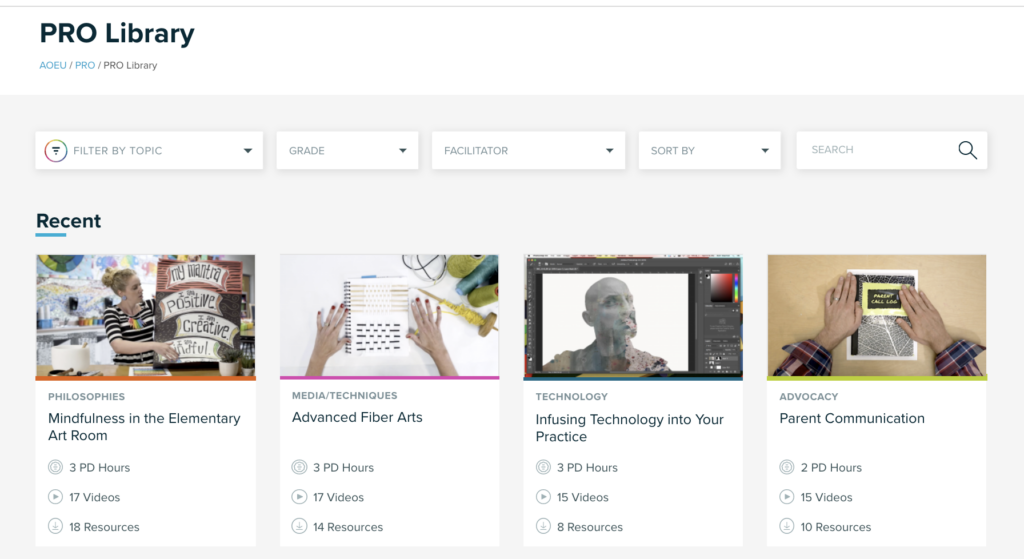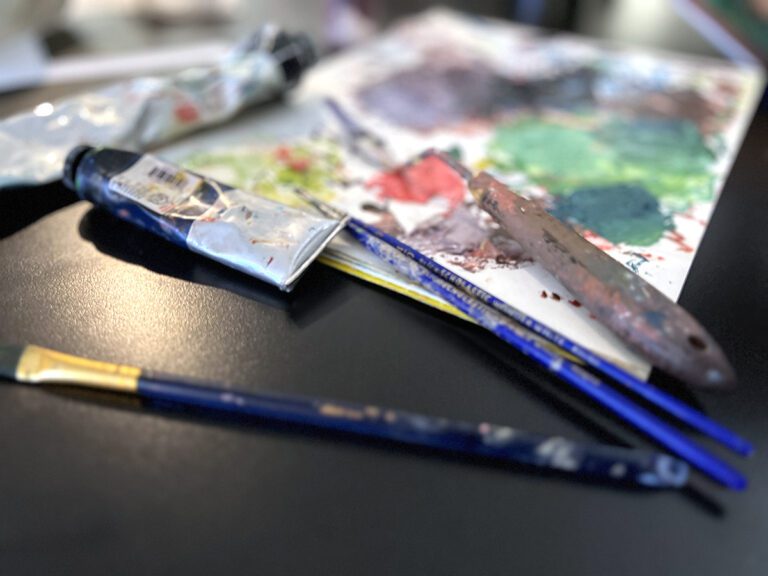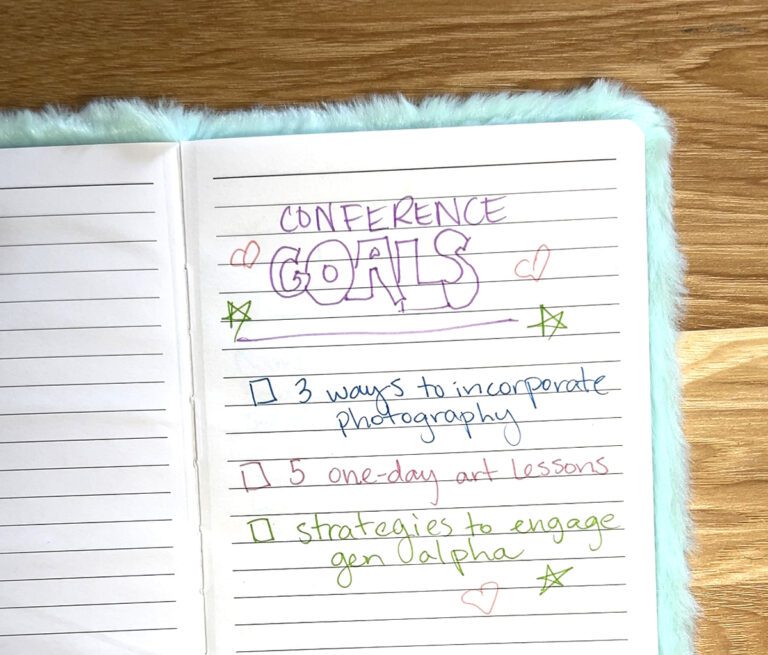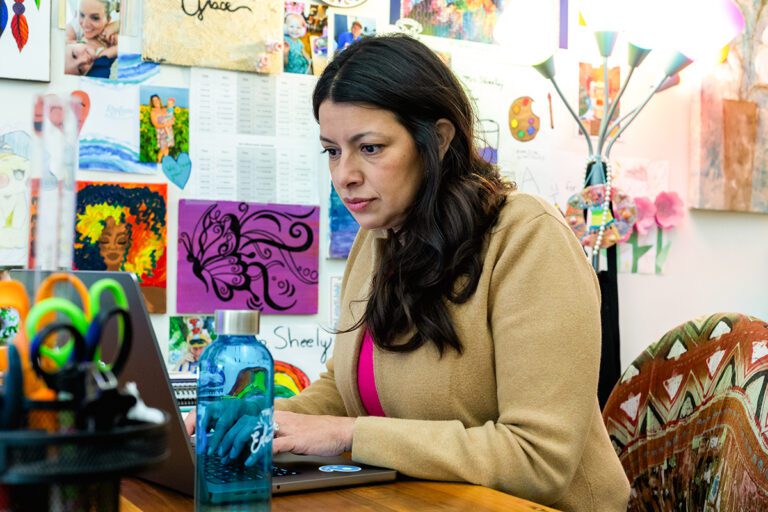Every art teacher has been there—stuck in a professional development meeting that does not apply to them. When I was in the classroom, I personally attended plenty of sessions about the latest math programs, the newest science curriculums, and the freshest literacy strategies. While I always tried my best to take something noteworthy back to my classroom, it wasn’t always easy. I longed for the day that my administrator would say, “Amanda, here’s some professional development related to art education that I think you’d enjoy!”
That’s why I’m so excited about my role as Director of K-12 Professional Development at The Art of Education University. With our twice-yearly online conferences and PRO Learning platform, art teachers no longer have to be stuck in PD that doesn’t apply to them. Coming from my days in the classroom, it feels incredibly satisfying to be able to help art teachers everywhere get the professional development they deserve. Furthermore, research shows having access to content-specific PD is important for teachers and students.
What is the impact of content-specific professional development on teachers?
According to the 2019 State of Art Education Survey, only twenty-six percent of teachers found their district’s professional development opportunities relevant and engaging. That means a whole lot of art teachers aren’t getting the professional development they need in order to make a difference in their teaching practice!
The article, Teaching Teachers: PD To Improve Student Achievement by Learning for Justice, gives insight as to why. It says, “To be effective, professional development must provide teachers with a way to directly apply what they learn to their teaching. Research shows that professional development leads to better instruction and improved student learning when it connects to the curriculum materials that teachers use.” Taking this information into account, it’s no wonder art teachers feel underwhelmed by their districts’ offerings. School or district-led professional development is rarely geared toward art teachers and what they do in the classroom.
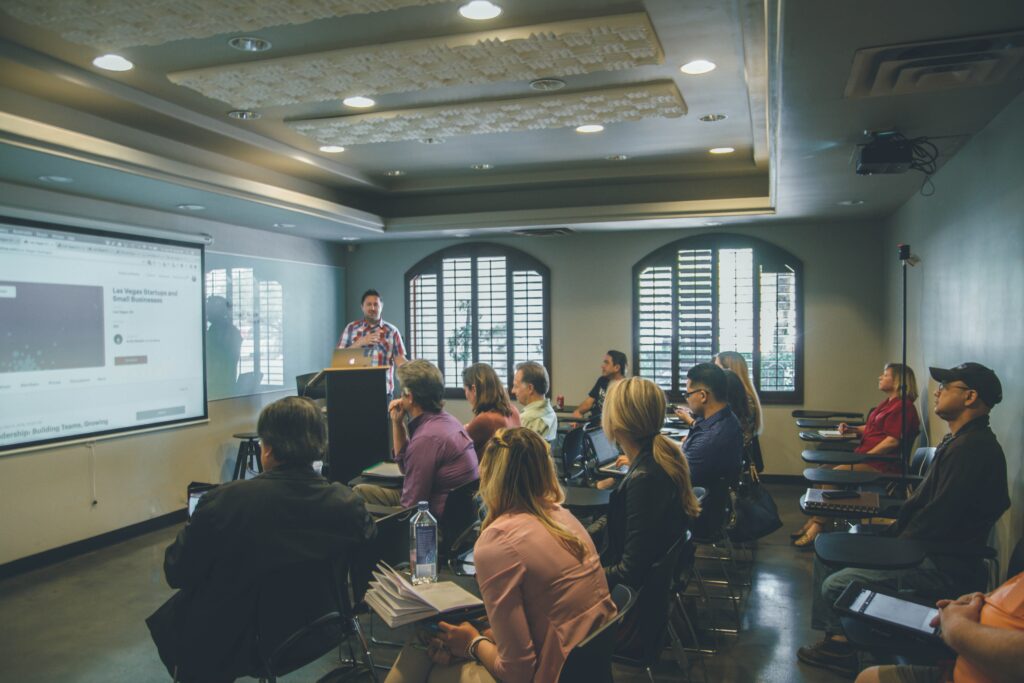
This disconnect can lead to lasting consequences. Effects of professional development on the quality of teaching: Results from a randomized controlled trial of Quality Teaching Rounds, published in the November 2017 issue of Teaching and Teacher Education dig into this issue. The paper outlines a study that looked at the connection between participating in targeted professional development and the quality of teaching. Those teachers who participated in professional development improved their quality of teaching significantly. Furthermore, teachers continued to have improved teaching quality a year after the study took place.
Teacher morale can also be affected by having access to quality PD. The same study showed teachers who participated in regular professional development had notably higher morale than teachers who did not in areas like enthusiasm for work, energy, and more. Again, these were lasting effects that played out long after the study was over.
What is the impact of content-specific professional development on students?
It seems obvious that high-quality, content-specific professional development would positively impact teachers. What is less easy to prove is how this same professional development can make a difference for students. Researchers have had some trouble in setting up effective studies.
Luckily, the U.S. Department of Education’s Institute of Education Sciences (IES) published a comprehensive report on the connections between professional development and student achievement. The authors combed through over 1,000 studies to find the nine that met IES’s rigorous standards. Out of an average of 49 hours from the nine studies, teachers who get substantial PD can boost their students’ achievement by about 21 percentile points.

Teachers receiving content-specific professional development have an even better chance of seeing gains in their students. To understand why we can turn to two studies featured in the Teaching Teachers: PD To Improve Student Achievement article.
One study by David Cohen and Heather Hill, authors of Learning Policy: When State Education Reform Works, found “…teachers whose learning focused directly on the curriculum they would be teaching were the ones who adopted the practices taught in their professional development.” In addition, the article cites a study by Michel Garet et al. published in the American Educational Research Journal which found “…teachers were more likely to change their instructional practices and gain greater subject knowledge and improved teaching skills when their professional development linked directly to their daily experiences and aligned with standards and assessments.”
How does PRO Learning support teachers and students?
We know from the research that teachers who have access to a significant amount of content-specific professional development are more likely to bring their new knowledge into their classrooms and positively impact student outcomes. The good news is that PRO Learning makes doing so incredibly easy.
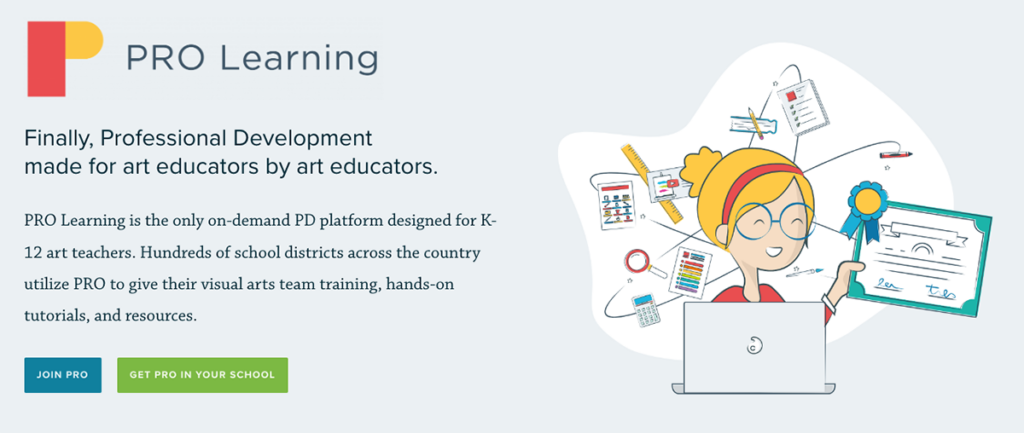
PRO Learning is an on-demand professional learning platform designed for art teachers, by art teachers! With PRO Learning, art teachers have access to thousands of videos and downloadable resources created just for them. The PRO Library has hundreds of Packs that cover an extensive list of topics in the field of art education. And what’s more, we add new content to the platform each and every month. Art teachers can access hundreds of professional learning hours at the touch of a button about high-interest topics that will directly impact their teaching practice and their students.
Here are three real-world ways art teachers can use PRO Learning.
Because the PRO Library is so extensive, teachers can customize their professional learning experience to meet their unique needs. Let’s look at three ways a teacher may choose to utilize PRO Learning to improve their teaching practice.
1. Address growth areas.
According to the 2019 State of Art Education Survey, teachers’ biggest classroom struggles included behavior management, a lack of respect for the art program as a whole, and grading and assessing their students. There are so many Packs teachers can use to help solve these common issues.
For example, let’s say a teacher is dealing with some challenging behavior problems. They may choose to dive into the Behavior Management at the Elementary Level and Social-Emotional Learning Packs to find specific strategies and resources to implement and use in their classroom. Or, perhaps a teacher is struggling with how to assess their students in a meaningful way. They would likely be thrilled with the videos and resources in the Standards-Based Grading, Formative Assessment Strategies, and Critiques at Every Level Packs.
2. Gain new content knowledge.
While it would be wonderful if teacher education programs covered the entire field of art education, that’s not always the case. Sometimes, teachers walk away from their college experience with gaps in their knowledge. Plus, like any field, art education is always changing and evolving. PRO is the perfect way for teachers to hone in on new media, techniques, and teaching ideas that interest them.
Perhaps a teacher is wanting to learn about incorporating more student choice in their classroom. Transitioning from Traditional to Choice Curriculum and Organizing for Choice would be a perfect place to start. Or maybe, a teacher is thinking along the lines of the 2019 State of Art Education survey participants and lists Growth Mindset, STEAM, and Social-Emotional Learning as areas of interest. We have PRO Packs for all three!
Whatever a teacher needs to make them more effective in the classroom with their students, we have it!
3. Connect with colleagues.
One more way art teachers can use PRO Learning is to connect with colleagues. Although PRO is web-based, teachers can meet up in person and watch together! In fact, we have a sample agenda in our Growth Mindset Learning Pack. Art teachers can create a professional development day around a single Pack, a common theme, or multiple themes. See this helpful download to create your own personalized PD day.
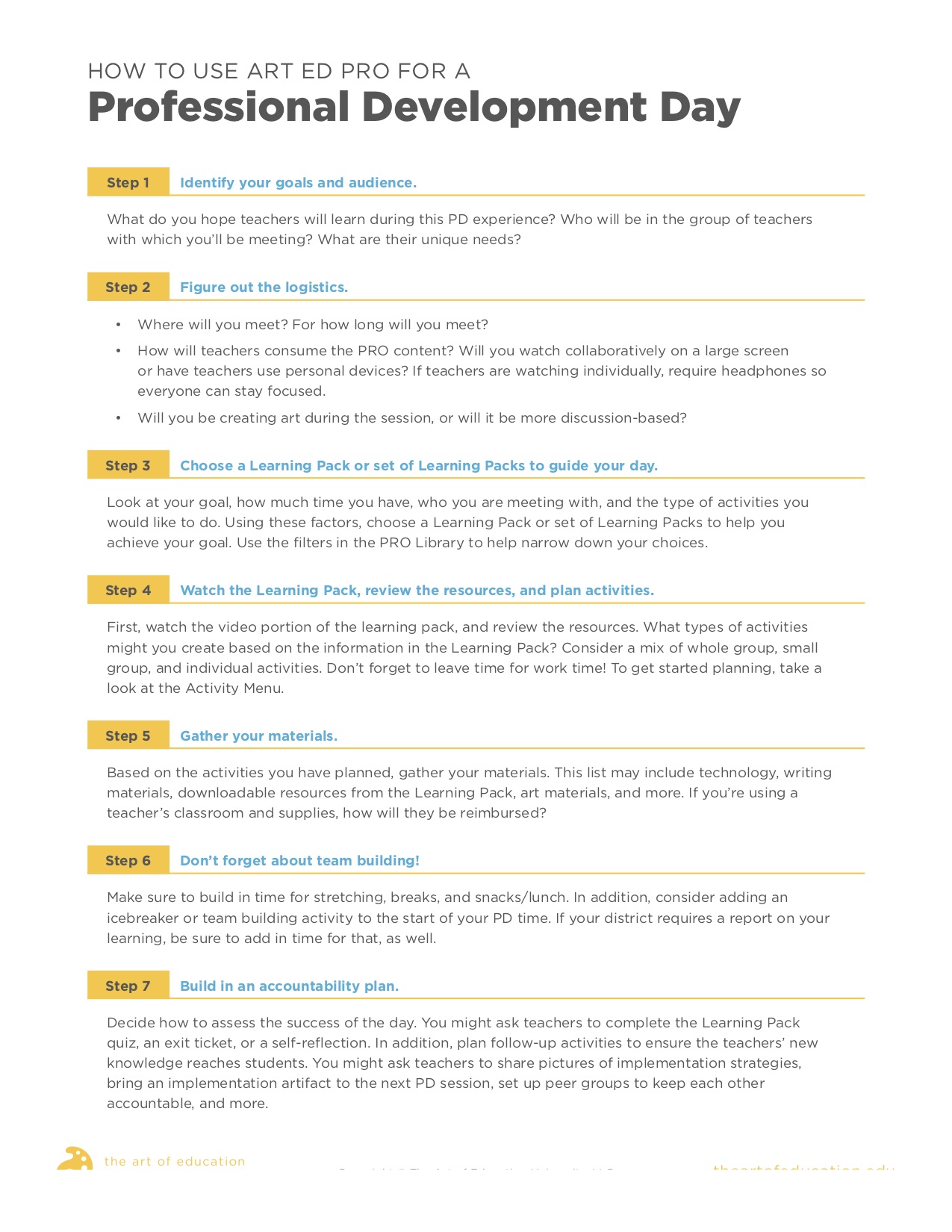
For instance, a group of teachers may decide to get together and watch the Growth Mindset Pack. They can all learn and talk about how they can foster a growth mindset in themselves and their students to take their teaching practice and student knowledge to the next level. Or, a group of teachers can get together and divide and conquer. Each can watch a PRO Pack that pertains to an area of classroom management in which they want to grow. At the end of the session, they can come back together and share with the larger group.
How do I get PRO Learning in my school?
We looked at the evidence—relevant teacher professional development positively affects student achievement. This unfolds in the following three steps. “First, professional development enhances teacher knowledge and skills. Second, better knowledge and skills improve classroom teaching. Third, improved teaching raises student achievement. If one link is weak or missing, better student learning cannot be expected.”
With PRO Learning, art teachers no longer have to search for professional development that’s relevant to them. They can better their knowledge and skills, improve their teaching, and raise student achievement in their art room. Furthermore, they can do this all from the comfort of their own classroom or even their own couch! With access to unlimited on-demand learning, anything is possible!
To learn more about getting PRO Learning in your school, check out PRO for Schools or connect with our sales team!
Magazine articles and podcasts are opinions of professional education contributors and do not necessarily represent the position of the Art of Education University (AOEU) or its academic offerings. Contributors use terms in the way they are most often talked about in the scope of their educational experiences.
